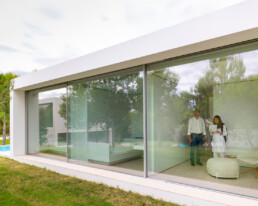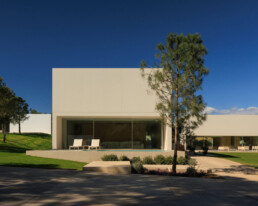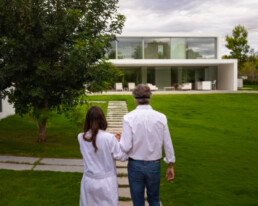Architecture and Health: Neuroarchitecture
DATE
20.05.2025
In recent decades, the connection between architecture and health has gained renewed prominence through neuroarchitecture, a discipline that explores how built environments affect our brains, emotions, and overall well-being.
This line of thought is based on a deep understanding of sensory perception and the neurobiological mechanisms activated when inhabiting a space. Neuroarchitecture proposes designing environments that not only meet functional and aesthetic criteria, but also optimize users’ mood, productivity, and mental health.
One of the most compelling conceptual roots for understanding this approach can be found in the writings of Beatriz Colomina, particularly in her book X-Ray Architecture, where she analyzes how modern architecture was conceived as a tool for healing diseases like tuberculosis. Colomina describes how architects such as Le Corbusier and Alvar Aalto designed bright, well-ventilated, minimalist spaces with the intention of purifying both body and mind. This vision of architecture as a therapeutic agent remains alive today, now supported by scientific research and technologies that measure the real impact of spaces on the nervous system and human behavior.
Among current trends in neuroarchitecture are the use of biophilia—the integration of natural elements into the built environment—, the regulation of natural light to support circadian rhythms, and multisensory design to create more balanced experiences. There’s also a focus on spatial configurations that reduce stress, such as fluid circulation, warm materials, and increased attention to acoustics. These strategies are being applied in homes, schools, hospitals, and workplaces in an effort to humanize architecture through scientific principles.
In this context, the collaboration between the Polytechnic University of Valencia and the studio Fran Silvestre Arquitectos has led to notable advancements in projects such as NIU Houses. These modular homes have been designed with parameters related to sensory perception and residents’ health in mind. Through studies conducted by UPV researchers, aspects such as orientation, lighting control, spatial layout, and material choices have been evaluated for their impact on the physical and emotional well-being of occupants. Thus, neuroarchitecture is not only a theoretical trend, but a concrete practice that transforms how we understand and design our living spaces.
MArch Valencia. Arquitectura y Diseño
© 2025 MArch Valencia. Arquitectura y Diseño
Privacy policy | Cookies policy | Terms of use






